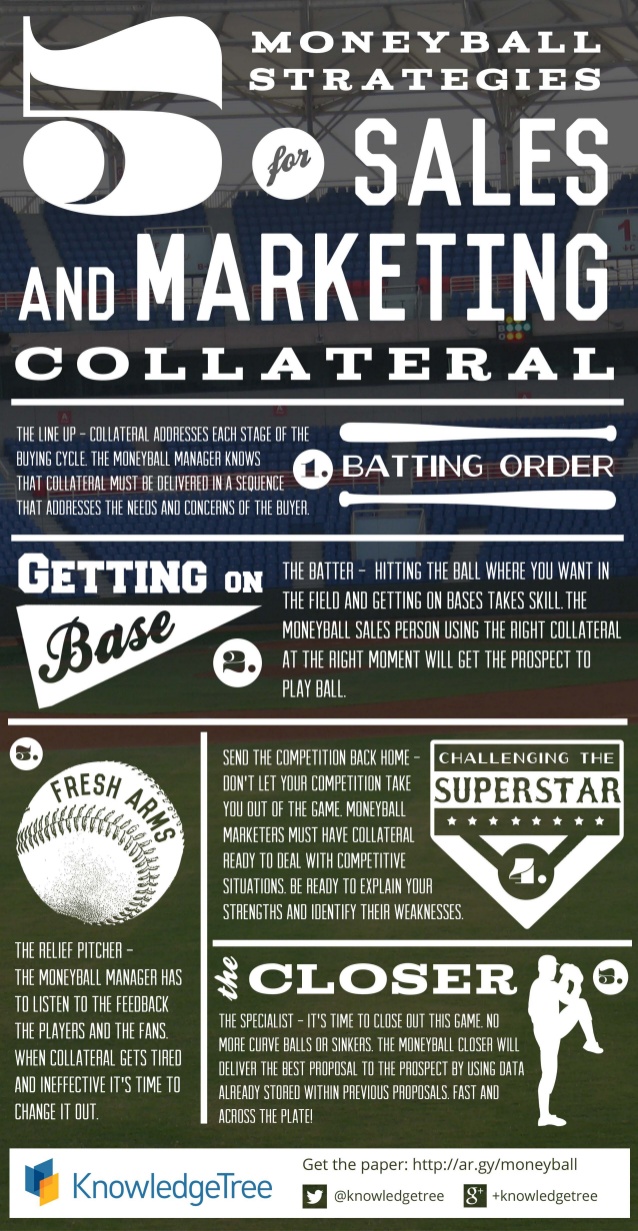I know what you’re thinking, Steve’s writing about Moneyball only because of the incredible physical similarities between himself and Brad Pitt – who starred in the movie of the same name.
Well, Mr. Pitt’s and my striking resemblances aside, the reason for my article is to share with you something I discovered that ties in the concept of Moneyball with sales and marketing. Now for those of you who are not familiar with the term “Moneyball” please allow me to explain.

The term itself comes from the title of a book written by Michael Lewis in 2003 called Moneyball: The Art of Winning an Unfair Game. The book is about the Oakland Athletics baseball team and the highly unusual and controversial methods they took to compete as a small market team with little money against larger market, bigger budget teams such as the Yankees.
The team’s general manager, Billy Beane (played by Pitt in the movie) decided to use a completely different set of statistics to gauge a player’s value and these methods often flew in the face of conventional baseball wisdom and the beliefs of many scouts and executives.
While the team never won a World Series (yet) using the Moneyball approach, the A’s have proven that their approach can work as witnessed by their 20 game winning streak in 2002, the longest of its kind in American League history – longer than even the most consecutive wins by the vaunted Yankees.
Moneyball For Sales And Marketing
A few weeks ago I was introduced to Peter Mollins, the VP of Marketing for KnowledgeTree – a company that specializes in helping companies use and improve their best collateral. Peter and I got to talking and he told me about the Moneyball approach to collateral and content marketing.
He also shared with me a very cool infographic he and his team put together to visually convey the concept of Moneyball for sales and marketing which is below.
SO: How does the theory of Moneyball apply to Sales & Content Marketing?
PC: You only have so many at-bats with a prospect. So, each interaction needs to have impact. And when the prospect is disconnected from you, they need to be producing a winning business case for your solutions. That’s why it’s so important to arm your prospect with great content. Content that advances a sales process. But what do you send? The same content you’ve always used? Generic content that doesn’t speak to their needs? Of course not. You need to test which content works and works for different sales stages. Versus different competitors. For different pain points. And then put the right content into play. That’s the Moneyball approach.
SO: What do you see as being the biggest mistake brands make when it comes to sales & content marketing?
PC: The biggest mistake that these brands make is to forget that they tune their messaging in email campaigns, website content, and more. But why aren’t they doing it for the content that your prospects build their internal business cases around, the content that closes business? Generic messages and generalized content don’t close deals. Deals get closed by sales people armed with content that’s focused on the pains that a prospect is trying to ease. B2B customers need to know that you are speaking their language.
SO: Why do you think these same brands continue to keep making these same mistakes?
PC: These organizations keep making the mistake because it is a gray area between sales and marketing teams. Collateral generally gets produced by marketing and consumed by sales. So, how do you make sure that the right marketing content is getting surfaced to the sales team. And how does sales get feedback back to marketing to make sure content continues to improve? The divide between sales and marketing, the communication around what resonates with prospects, has to be bridged.
Cover image via Amazon
Source: Forbes
Named one of the Top 100 Influencers In Social Media (#41) by Social Technology Review and a Top 50 Social Media Blogger by Kred, Steve Olenski is a senior creative content strategist at Responsys, a leading global provider of on-demand email and cross-channel marketing solutions, and a member of the Editorial Board for the Journal of Digital & Social Media Marketing. He can be reached via Twitter, LinkedIn or Email.
